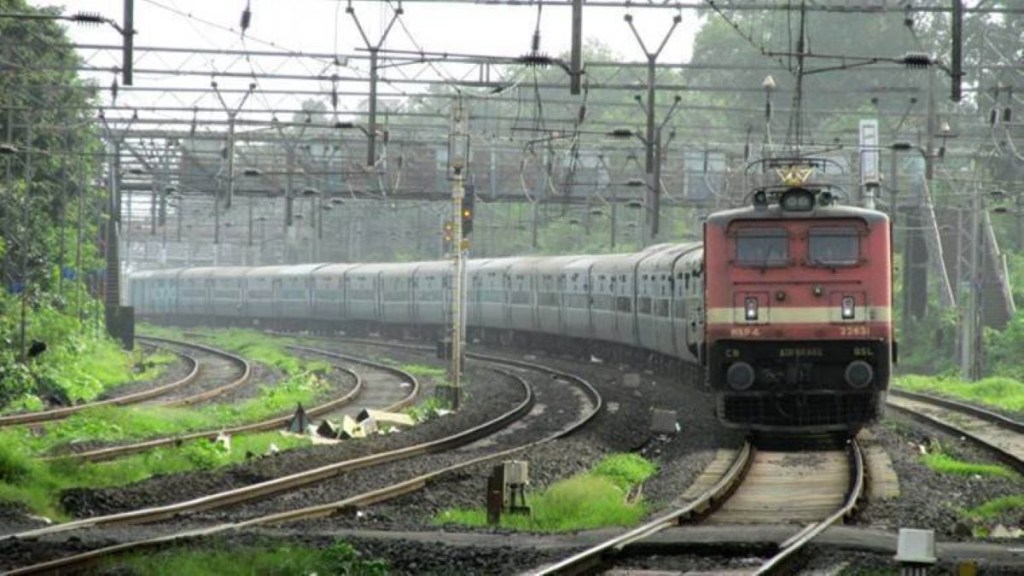Despite a sharp rise in capital expenditure by the railways over the last few years, the national transporter’s operating ratio still hovers around 100, meaning it makes little operational surplus. This is mainly because efficiency gains and new revenue streams from the assets created come with a lag.
Another aspects of the aggressive capex drive is that it relies largely on Budget outlays and borrowings via IRFC and other sources, and private participation in projects at best have begun to look up.
For the third year in a row, the government extended robust budgetary capex support for the railways to aid its capacity creation. The budget outlay is Rs 2.4 trillion for FY24, up 50% on year and accounted for nearly a fourth of the Centre’s Rs 10 trillion overall capex outlay for next year.
The railways’ total capex including internal and extra-budgetary resources (IEBR) is estimated to be Rs 2.6 trillion in FY24, up only 6% on the year. This means a reduced reliance on borrowings, a strategy the Centre has adopted for the highway sector too, particularly since FY23. While IEBR (borrowings) for railways was Rs 86,000 crore in FY23 (revised estimate), it is only Rs 20,000 crore in FY24BE. Essentially, the government tried to bail out the railways by substituting a large portion of IEBR funding with budget funding for capex to keep the finances evenly balanced.
The curbs on borrowings by the railways and NHAI indicate the government’s intent to deploy its budget capex in areas where the spending capacity is high. Also, the cost of borrowings by the sovereign itself is seen to be lower than government-managed entities.
In FY24BE, the railway’s gross traffic receipts are estimated to be Rs 2.64 trillion, up 8.6% on year. During the year, the working expenses of the transporter are estimated to rise by over 9%.Railways’ operating ratio (total working expenses to gross traffic receipts) is projected to be 98.45 in FY24 from 98.22 in FY23 and 107.39 in FY22.“With economic growth at 6-7% in the last few years, railways’ revenue should have grown at about 13-14%,” said Sudhanshu Mani, retired General Manager, Railways and independent consultant. There is a need to find ways to increase revenue, Mani said adding that policies for last-mile deliveries need to be tweaked so that railways get more share of freight traffic.
Public-private partnership (PPP) in railways has not worked well in the past and the national transporter now depends more on the self-funded EPC (engineering, procurement and construction) model for its projects.
Even though railways account for Rs 1.52 trillion or one-fourth of the Centre’s ambitious Rs 6 trillion National Monetisation (NMP) pipeline in four years through FY25, railways have almost drawn a blank in the first two years (FY22 and FY23). Finance ministry officials blame this on the lack of serious initiative by the railways to tailor-made projects to attract private capital, thereby becoming more dependent on the Budget to fund its projects.
Railways officials note that there was high risk in railway projects, which often makes it unviable for the private operator to participate. Further, railways have to maintain a social objective, while the private partner has to keep an eye on profits.According to the NMP, railways need to monetise 120 stations, 30 trains and 1,400 km of track, among others in FY23. But, it has achieved little so far.
In the past, the Madhepura and Marhowrah railway loco factories were taken up on the PPP route. At present, the railways are using the PPP route for the modernisation of 16 stations including Anand Vihar and Vijayawada, which is estimated to cost about Rs 10,000 crore. Railway colony redevelopment is also being done through the PPP route.
Cost overruns have emerged as another major issue in railways. Cost overruns, which were 24.5% in December 2020, have increased to 28.4% in December 2022, according to research firm Nomura.

